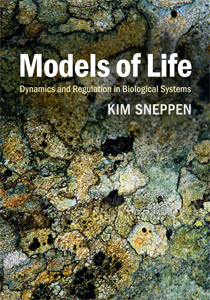New book about life as seen from physics
The book ’Models of Life’ is a non-traditional biophysics textbook and it describes how life functions and controls itself. The book is a journey of discovery into biological systems and provides an understanding of the principles of life and biological regulation. It is about how our genes make proteins that control the dynamics and strategic communication between the billions of cells in an organism. It quantifies the principles of life and emphasizes the relationships between principles, which can be found on both large and small scales. The book is written by a professor of biophysics, Kim Sneppen, Niels Bohr Institute at the University of Copenhagen.

Professor of biophysics, Kim Sneppen, Niels Bohr Institute
“I describe biology as a system and focus on the relationships rather than dig down into the smallest details,” explains Kim Sneppen. As an example, he notes the fascinating interactions in biological systems, where nature, despite the eternal competition to be the strongest and fittest and the tendency for the ’winner’ to take it all, still allows room for great diversity. Here the book uses analogies from the many strategic battles between viruses and bacteria that use weapons, anti-weapons and anti-anti-weapons – weapons and strategies that echo the billion year history of bacteria.
The fight for survival
Kim Sneppen also demonstrates that a noble trait like sacrifice is not only a sign of man’s superiority over less evolved organisms. The idea of sacrificing oneself for the community is also found among so-called simple organisms like viruses and bacteria. There are bacteria that will choose to commit suicide when exposed to a virus in order to prevent the virus from using the bacterium to make more viruses that can attack the relatives of the bacteria.
 Such mechanisms can also be found when a virus infects a cell and decides whether it will kill the cell and use it to make many copies of itself or whether it will live in a symbiotic relationship with the cell.
Such mechanisms can also be found when a virus infects a cell and decides whether it will kill the cell and use it to make many copies of itself or whether it will live in a symbiotic relationship with the cell.
The target audience for the book is university students studying physics or biology, but it could also be used in upper secondary schools, where it is ideal for special projects with a focus on multidisciplinary assignments that, for example, combine biology, physics and mathematics. It could also be interesting for those who have a general interest in science.
